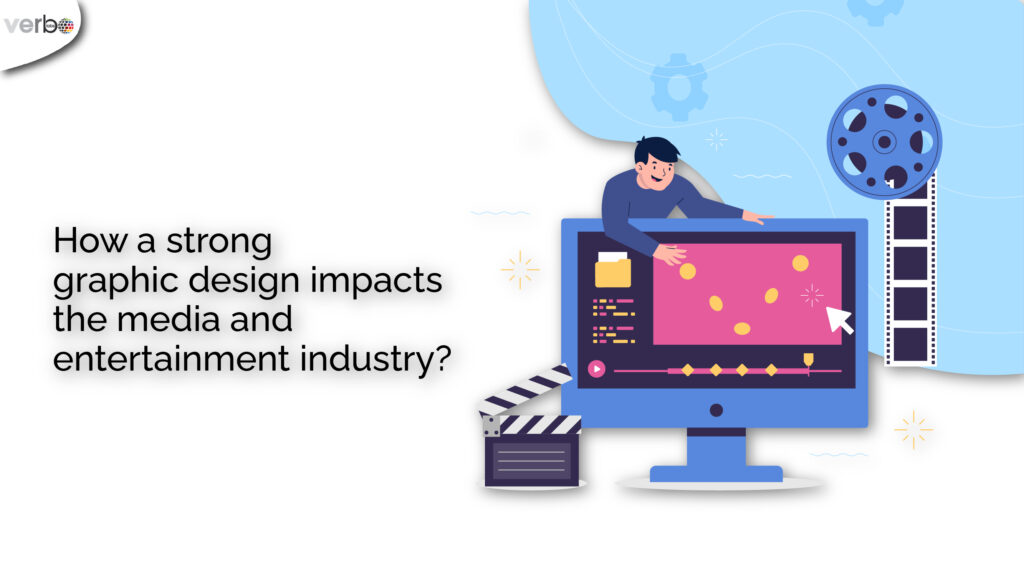The role of graphic design services will always be of importance in the media and entertainment industry. From captivating movie posters to immersive video game interfaces and from eye-catching album covers to dynamic website layouts, strong graphic design serves as the backbone of creative expression. Let’s look at the multifaceted ways in which a robust graphic design presence shapes and influences the media and entertainment industry.
First Impressions Matter
In an ecosystem flooded with content, first impressions are often formed within seconds. Whether it’s a movie, a video game, or a music album, the visual identity established through graphic design plays a pivotal role in capturing the audience’s attention. Think about iconic movie posters like those of “Star Wars” or “Jurassic Park.” These visuals not only convey the essence of the content but also create a lasting imprint in the minds of the audience.
The media and entertainment industry thrives on audience engagement, and a strong visual identity crafted through graphic design becomes the gateway to this engagement. From the choice of colors to the selection of fonts, every element contributes to shaping the perception of a piece of content.
Building Brand Recognition
Graphic design extends beyond individual pieces of content and contributes significantly to building and reinforcing brand recognition. The distinctive typography of a TV show’s title, the instantly recognizable logos of streaming platforms, and the cohesive design language across a series of novels all contribute to establishing a brand’s identity.
Consider the unmistakable opening sequence of HBO’s Game of Thrones or the minimalist yet powerful design of the Apple Music interface. These are not just designs but are signatures that consumers associate with a specific brand or experience. In a crowded market, building and maintaining such brand recognition is instrumental in fostering a loyal audience base.
Enhancing User Experience in Digital Spaces
User experience will always remain a critical aspect of graphic design. Websites, streaming platforms, and mobile applications rely on intuitive and visually appealing interfaces to keep users engaged.
Effective graphic design in digital spaces involves more than just aesthetics. It encompasses user interface (UI) and user experience (UX) design principles that streamline navigation, enhance accessibility, and optimize overall usability. A well-designed website or app not only attracts users but keeps them coming back for more, contributing to increased user retention and prolonged engagement with the content.
The media and entertainment industry thrives on storytelling, and graphic design expands this narrative into the visual realm. Motion graphics and animation have become integral components in conveying stories, creating dynamic trailers, and enhancing the overall content experience.
Motion Graphics and Animation
Consider the impact of animated title sequences in television series like “Stranger Things” or the visually stunning graphics in documentary films. These elements not only add aesthetic appeal but also serve as storytelling tools, setting the tone for the narrative and immersing the audience in the world of the content.
Adapting to Changing Trends and Understanding the Dynamic Nature of Design
Graphic design services are not static. It evolves alongside technological advancements and changing design trends. In the media and entertainment industry, staying relevant is key, and graphic designers play a crucial role in adapting visual elements to align with contemporary tastes.
For instance, the rise of social media as a content distribution platform has led to the creation of shareable and visually striking promotional materials. Memorable hashtags, aesthetically pleasing thumbnails, and visually engaging social media posts all fall under the purview of graphic design, showcasing its adaptability in catering to evolving audience preferences.
Crossing Cultural Barriers
Graphic design has the power to transcend linguistic and cultural barriers. In a time when content is consumed by diverse audiences, visual elements become a universal language. A well-designed movie poster or album cover can convey emotions and themes that resonate with people worldwide, irrespective of language differences.
Imagine the iconic graphic design of Studio Ghibli films, which effortlessly communicates the essence of each movie to audiences across the globe. Such cross-cultural appeal is a testament to the ability of graphic design to convey messages that go beyond words.
Elevating Live Experiences
Beyond the digital and screen-based experiences, graphic design plays a significant role in shaping live events. Concert posters, stage visuals, and event branding contribute to the overall atmosphere and leave a lasting impression on attendees.
Think about the dynamic graphics displayed on stage during a music concert or the visually stunning backdrops in a Broadway production. These elements not only enhance the live experience for the audience but also contribute to the overall identity of the event.
Inclusivity in Graphic Design
In recent years, there has been a growing awareness of the importance of diversity and inclusivity in all aspects of society, including the media and entertainment industry. Graphic design has a crucial role to play in reflecting and celebrating this diversity. From casting choices in movie posters to representation in video game character design, the industry is gradually becoming more conscious of the need for inclusive visuals.
A powerful example of this shift can be seen in the evolution of book cover designs. Publishers are now embracing designs that authentically represent the characters and themes within a story, challenging stereotypes and offering a more diverse range of visual narratives. By doing so, graphic designers contribute to a cultural shift where everyone can see themselves reflected in the media they consume.
Navigating the Digital Age
With the proliferation of devices and platforms, graphic design has expanded to accommodate the diverse ways in which audiences access content. Responsive design, a key concept in contemporary graphic design, ensures that visuals are optimized for various screen sizes, from smartphones to large desktop monitors. This adaptability is crucial in maintaining a consistent and engaging user experience across different devices.
The rise of augmented reality (AR) and virtual reality (VR) introduces new challenges and opportunities for graphic designers. Crafting immersive and visually stunning environments for VR experiences or incorporating AR elements into print materials showcases the adaptability of graphic design in embracing cutting-edge technologies.
Graphic Design as a Marketing Tool
Graphic design services are not only about creating visually appealing content but also serve as a potent marketing tool. In the media and entertainment industry, effective marketing can make the difference between a blockbuster and a box office flop. From teaser posters that generate anticipation to social media campaigns that go viral, graphic designers contribute significantly to a project’s overall marketing strategy.
Consider the impact of a well-designed movie trailer or the buzz generated by a strategically placed billboard. These elements are meticulously crafted by graphic designers to capture the audience’s attention, build anticipation, and contribute to the overall success of a media or entertainment project.
Ethical Considerations
As the influence of media and entertainment on societal perceptions continues to grow, graphic designers bear the responsibility of ethical visual representation. From avoiding harmful stereotypes to promoting positive social messages, graphic design has the power to shape attitudes and opinions. Thoughtful consideration of the implications of visual choices is crucial in fostering a more inclusive and socially responsible media landscape.
Conclusion
As we navigate the evolution of technology, cultural shifts, and diverse audience expectations, graphic design services remain a constant force, adapting and innovating to meet the challenges of the industry. VerboLabs focuses on how the role goes beyond aesthetics, encompassing inclusivity, technological advancements, marketing strategies, and ethical considerations.
In the intricate play of media and entertainment, graphic design is the thread that weaves together stories, identities, and experiences. It is a testament to the power of visual communication, going beyond language and cultural barriers to connect with audiences on a profound level. As we look to the future, the influence of strong graphic design in shaping the narratives of our collective imagination is bound to strengthen, ensuring that the visual symphony continues to resonate with audiences across the globe.



